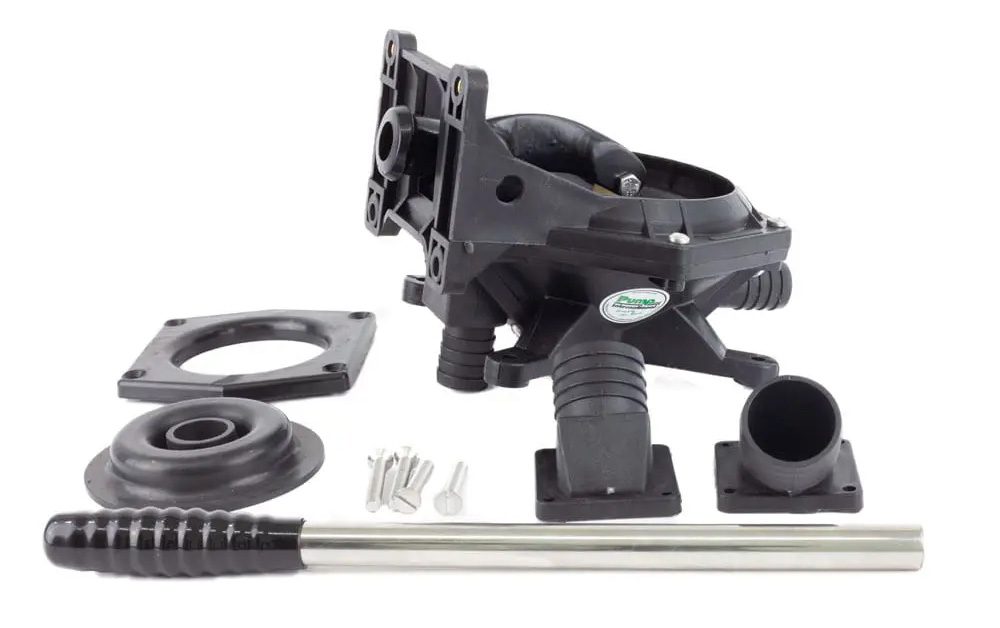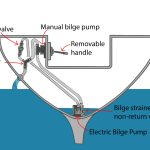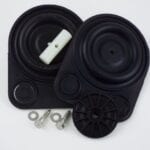Manual diaphragm pumps play a pivotal role in various industries, ensuring smooth and efficient operations. As you explore the world of pumping solutions, you might have a plethora of questions. In this comprehensive guide, we address the most common queries regarding manual diaphragm pumps, shedding light on their functionality, applications, maintenance, and benefits.
What is a Manual Diaphragm Pump?
A manual diaphragm pump is a type of positive displacement pump that uses a flexible diaphragm to move a specific volume of fluid. This diaphragm, typically made of rubber or thermoplastic, flexes and moves, creating a vacuum and pressure that facilitates the movement of the fluid. Unlike other pumps, manual diaphragm pumps are manually operated, making them versatile and suitable for various applications.
How Does a Manual Diaphragm Pump Work?
The operation of a manual diaphragm pump is fairly straightforward. When you apply manual force, the diaphragm flexes, creating a partial vacuum in the pump chamber. This vacuum forces the fluid into the pump. When the diaphragm is released, it returns to its original position, exerting pressure on the fluid and expelling it through the discharge port. The process is cyclical and ensures a consistent flow of the intended substance.
What Are the Applications of Manual Diaphragm Pumps?
Manual diaphragm pumps find application across various industries due to their versatility and efficiency. Some common applications include:
Chemical Industry: Transferring chemicals, acids, and corrosive substances.
Agriculture: Spraying pesticides, fertilizers, and herbicides.
Mining: Handling slurry and abrasive materials.
Food and Beverage: Pumping food products and beverages.
Pharmaceuticals: Transferring pharmaceutical compounds and solutions.
What are the Advantages of Using Manual Diaphragm Pumps?
Manual diaphragm pumps offer several advantages that make them a preferred choice in certain scenarios:
Versatility: They can handle a wide range of fluids, including abrasive and viscous substances.
Portability: Being manually operated, they are easily portable and do not rely on external power sources.
Simple Maintenance: Maintenance is minimal, typically involving diaphragm replacement and basic cleaning.
Cost-Effectiveness: Manual diaphragm pumps are generally more affordable compared to other types of pumps.
How Can You Maintain a Manual Diaphragm Pump for Optimal Performance?
Maintaining a manual diaphragm pump is crucial for ensuring its longevity and optimal performance. Here are some maintenance tips:
Regular Inspection: Check for any signs of wear, tear, or damage to the diaphragm and valves.
Clean and Lubricate: Clean the diaphragm and valves regularly and ensure proper lubrication for smooth operation.
Diaphragm Replacement: Replace the diaphragm at recommended intervals or if signs of deterioration are evident.
Handle with Care: Operate the pump following the manufacturer’s guidelines to prevent unnecessary strain on the components.
Can a Manual Diaphragm Pump Handle Hazardous Materials Safely?
Manual diaphragm pumps are designed to handle a variety of fluids, including hazardous and corrosive materials. The flexibility of the diaphragm allows for safe and efficient transfer of such substances without risking contamination or harm to the operator.
Check our diaphragm compatibility page to learn more about the difference between diaphragms and there applications.
Are Manual Diaphragm Pumps Suitable for High-Pressure Applications?
Yes, manual diaphragm pumps can be used in high-pressure applications. By applying manual force to the diaphragm, they can generate sufficient pressure to pump fluids against a significant head or resistance, making them suitable for various high-pressure industrial tasks.
What Maintenance Is Required for the Valves in a Manual Diaphragm Pump?
Valves in a manual diaphragm pump play a critical role in controlling the flow of fluids. Regular maintenance involves inspecting and cleaning the valves to ensure they are free of debris and functioning optimally. Replacing worn or damaged valves is important to maintain efficiency and prevent leakage.
Can a Manual Diaphragm Pump Handle Solid Particles in the Fluid?
Yes, manual diaphragm pumps can handle fluids with solid particles or suspended solids. The flexible diaphragm can accommodate small solid particles in the fluid without clogging, making these pumps suitable for applications where solids may be present.
How Do I Determine the Right Size of Manual Diaphragm Pump for My Application?
Selecting the appropriate size of a manual diaphragm pump depends on factors such as the desired flow rate, pressure requirements, and the type of fluid being pumped. Consulting with a pump supplier or considering the pump’s specifications in relation to your application needs can help in determining the right size for optimal performance. Looking for a manual pump for your garden? Check out this article. If you are unsure, do not hesitate to get in touch with us.
Is it Possible to Adjust the Flow Rate on a Manual Diaphragm Pump?
Yes, the flow rate on a manual diaphragm pump can be adjusted by varying the speed and force applied during the pumping process. Operators can control the flow by modulating the manual strokes, allowing for flexibility in managing different flow requirements.
Can Manual Diaphragm Pumps Handle Viscous Fluids Effectively?
Yes, manual diaphragm pumps are capable of handling viscous fluids effectively. The design of the diaphragm pump allows for the movement of thick and viscous substances, making them suitable for applications where the fluid has a higher viscosity.
Are Manual Diaphragm Pumps Self-Priming?
Yes, manual diaphragm pumps are typically self-priming. The manual operation of the pump allows for the creation of a vacuum within the pump chamber, enabling it to draw and prime the fluid without the need for external priming assistance.
What Safety Precautions Should I Follow When Using a Manual Diaphragm Pump?
When using a manual diaphragm pump, it’s essential to follow safety precautions to prevent accidents and ensure safe operation. This includes wearing appropriate personal protective equipment (PPE), understanding the pump’s capabilities and limitations, and following proper handling and operating procedures.
Can Manual Diaphragm Pumps Run Dry Without Damage?
Manual diaphragm pumps should not be operated dry for extended periods as it can cause damage to the diaphragm and other components. It’s essential to ensure the pump is adequately primed with the fluid before operation to maintain its integrity and longevity.






